Welcome to the professional spine clinic

Maintaining good posture in our fast-paced, technology-driven world is more challenging than ever. Hours spent hunched over computers slouched on couches, and craning our necks to look at smartphones are taking a toll on our bodies. The consequences? Chronic pain, decreased mobility, and a host of other health issues can significantly impact our quality of life. Yet, despite these challenges, there exists a powerful remedy that can counteract the negative effects of modern living and help us reclaim the natural, healthy posture we were born with. Enter posture yoga—a transformative practice that not only enhances physical alignment but also promotes overall well-being. In this comprehensive guide, we’ll delve into how posture yoga can help you correct your posture, explore the different types of posture yoga, and provide practical tips to get you started on your journey to a healthier, more balanced body.
Good posture is more than just standing up straight. It involves the proper alignment of your spine and body, ensuring that your muscles, joints, and ligaments can function optimally. Here are some key physical benefits of maintaining good posture:
Reduced Back and Neck Pain: Poor posture places undue stress on the spine, leading to chronic pain in the back and neck. Proper alignment alleviates this stress, significantly reducing pain and discomfort.
Improved Breathing: When your body is correctly aligned, your diaphragm can move more freely, leading to better lung capacity and improved breathing. This ensures that your body receives the oxygen it needs for optimal functioning.
Enhanced Digestion: Good posture helps maintain the natural alignment of your digestive organs, promoting better digestion and nutrient absorption. This can prevent issues such as acid reflux and constipation.
Increased Energy Levels: Proper alignment reduces the strain on your muscles, allowing for more efficient energy use and less fatigue. This means you can perform daily tasks with greater ease and less tiredness.
Good posture also has significant psychological benefits that can enhance your overall quality of life:
Boosted Confidence: Standing tall and maintaining good posture can enhance your self-confidence and overall demeanor. It can affect how others perceive you and how you perceive yourself.
Reduced Stress: Proper alignment can help reduce physical tension, which in turn can lower your stress levels. This is because physical tension often exacerbates feelings of stress and anxiety.
Improved Focus and Concentration: A well-aligned body supports better mental clarity and concentration, helping you stay focused on tasks. This can lead to improved productivity and a greater sense of accomplishment.
Posture yoga is a specialized form of yoga that focuses on improving body alignment, flexibility, and strength. It involves a series of poses (asanas) and movements designed to correct imbalances, relieve tension, and promote a healthy, aligned posture. Unlike traditional yoga practices that may emphasize flexibility or spiritual growth, posture yoga specifically targets the structural aspects of the body to enhance overall physical health.
Posture yoga engages the core muscles, increases flexibility, and promotes awareness of body alignment. Here’s how it helps:
Core Strengthening: Many posture yoga poses require the engagement of core muscles, which are crucial for maintaining a stable and aligned spine. A strong core supports the back and reduces the risk of injuries.
Flexibility Improvement: Stretching and lengthening tight muscles helps to release tension and improve overall flexibility, which is essential for maintaining good posture. Increased flexibility allows for a greater range of motion and reduces the risk of strains and sprains.
Body Awareness: Regular practice increases your awareness of how you hold your body, making it easier to correct poor posture habits. This mindfulness extends beyond the yoga mat into daily activities, ensuring that you maintain good posture throughout the day.
Posture yoga operates on several principles to enhance body alignment, flexibility, and strength, thereby promoting overall well-being. Let’s delve into the core components of posture yoga:
Assisted Stretching
Posture yoga often incorporates assisted stretching techniques to gently elongate muscles, release tension, and improve flexibility. Assisted stretches can target specific areas of the body, helping to correct imbalances and alleviate discomfort.
Use of Props
Props such as yoga blocks, straps, ropes, chair, pillows, and bolsters are frequently utilized in posture yoga to provide support and assistance in achieving proper alignment. Props can aid individuals in accessing poses safely and effectively, making the practice accessible to practitioners of all levels.
Decompression Technique
Posture yoga includes decompression techniques designed to relieve pressure on the spine and joints. By incorporating movements that encourage spinal elongation and joint mobilization, posture yoga helps to counteract the compressive forces experienced during daily activities, promoting spinal health and mobility.
Breathing Technique
Breathwork is an integral aspect of posture yoga, emphasizing deep, mindful breathing to enhance relaxation, focus, and awareness. Proper breathing techniques facilitate the flow of oxygen to muscles and tissues, promoting vitality and reducing stress. Yes, proper alignment and posture can significantly improve breathing by allowing the diaphragm to move more freely and increasing lung capacity. Deep, mindful breathing is an important aspect of posture yoga and can enhance overall well-being.
Strength Building
In addition to flexibility, posture yoga focuses on building strength, particularly in the core and postural muscles. Poses such as Setubandh asana, Salabh Asana, Chaturangadand asana, and Adho Mukh swan asana engage muscles throughout the body, promoting stability and alignment.
Setubandh Asana (Bridge Pose): This pose involves lying on your back with your knees bent and feet flat on the floor, lifting your hips towards the ceiling. It engages the glutes, hamstrings, and lower back muscles, enhancing spinal flexibility and promoting better posture and alignment.
Salabh Asana (Locust Pose): Performed by lying face down and lifting your upper body, arms, and legs off the floor, this pose strengthens the back, glutes, and legs. It improves spinal extension and helps reduce lower back pain.
Chaturangadand Asana (Four-Limbed Staff Pose): Starting in a plank position and lowering your body halfway to the floor, this pose engages the core, shoulders, arms, and legs. It builds strength and stability, essential for maintaining a stable and aligned posture.
Adho Mukh Svan Asana (Downward-Facing Dog Pose): Forming an inverted V-shape with your body, this pose stretches and strengthens the entire body. It promotes overall body awareness, stability, and alignment by engaging the arms, shoulders, core, and legs.
By integrating these elements, posture yoga cultivates body awareness, improves posture habits, and fosters holistic well-being. Through consistent practice and mindful engagement, individuals can experience transformative effects on their posture and overall health
To see significant improvements in your posture, consistency is essential. Aim to practice posture yoga regularly, even if it’s just for a few minutes each day. Establishing a routine can help you develop good posture habits and maintain them over time. Remember that small, consistent efforts can lead to significant changes in your posture and overall well-being.
Pay close attention to your alignment in each pose. Use a mirror or ask a yoga instructor for feedback to ensure you’re practicing correctly. Proper alignment is crucial for preventing injuries and achieving the full benefits of each pose. Take your time to understand the correct alignment for your body and adjust as needed.
Be mindful of your body’s signals and avoid pushing yourself too hard. Yoga should be a gentle and enjoyable practice. If you experience any pain or discomfort, stop and rest. Over time, you’ll become more attuned to your body’s needs and limits, allowing you to practice safely and effectively.
Breathwork (pranayama) is a crucial component of yoga. Focus on deep, mindful breathing to enhance your practice and promote relaxation. Deep breathing can help to release tension, improve concentration, and support overall well-being. Incorporate breathwork into your posture yoga practice to deepen your connection with your body and mind.
If you’re new to yoga or have specific posture issues, consider working with a certified yoga instructor who can provide personalized guidance and support. A professional instructor can help you develop a practice that meets your unique needs and goals. They can also offer feedback and adjustments to ensure you’re practicing safely and effectively.
Posture yoga offers a holistic approach to improving your posture and overall well-being. By incorporating regular practice, focusing on alignment, and listening to your body, you can unlock the numerous physical and psychological benefits that come with good posture. Whether you’re a beginner or an experienced yogi, there’s always room to grow and improve. So, roll out your mat, take a deep breath, and embark on the journey to a healthier, more balanced you. With dedication and mindfulness, posture yoga can transform not only your posture but also your life.
1. What is Posture Yoga?
Posture yoga is a form of yoga that focuses on improving body alignment, strength, and flexibility to promote better posture and overall well-being. It involves a series of poses and movements designed to correct imbalances, relieve tension, and support a healthy, aligned posture.
2. How often should I practice Posture Yoga?
For best results, aim to practice posture yoga regularly, ideally several times a week. Even short, daily sessions can be beneficial. Consistency is key to developing good posture habits and maintaining them over time.
3. Can Posture Yoga help with chronic pain?
Yes, posture yoga can be very effective in alleviating chronic pain, particularly in the back, neck, and shoulders, by promoting proper alignment and strengthening supportive muscles. Regular practice can help to reduce pain and improve overall physical health.
4. Do I need any special equipment for Posture Yoga?
While not necessary, props such as yoga blocks, straps, and bolsters can be helpful, especially for beginners or those with specific posture issues. Props can provide support and help you achieve proper alignment in poses.
5. Is Posture Yoga suitable for beginners?
Absolutely! posture yoga is suitable for people of all levels, including beginners. Many poses can be modified to accommodate different abilities and needs. Start with gentle poses and gradually build your practice as you become more comfortable.


Call us at
9870379001